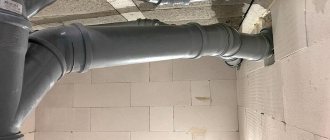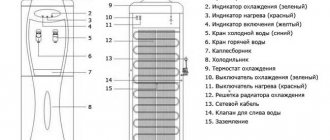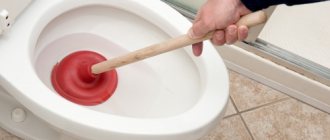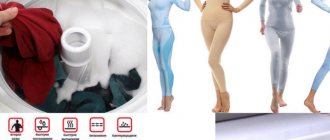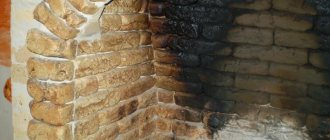The adhesive sticky substance has very good adhesion to any surface.
When choosing what to use to remove a resin stain, you need to take into account its type, the size of the affected area and other factors.
With the right approach, using home recipes and special products, the resin can be removed.
What should you do first to remove a stain?
Fresh, small stains of resin that have not had time to dry are much easier to remove. If you act quickly, the likelihood of eliminating contamination without a trace increases.
When the resin just gets on clothing, skin or another surface, you must try to immediately remove as much of the adhesive mass as possible .
This must be done very carefully, without spreading the stain over an even larger area. It is convenient to use a napkin or rag for this purpose.
The thick mass, while it is fresh, can be lifted with a scraper or a regular spoon. After most of the resin has been removed, a residue may remain on clothing or other items.
Before proceeding with further processing, the soiled item must be prepared - remove dust and dirt . You also need to decide which product is suitable for dealing with stains based on the type of resin and type of material.
Cleaning tiles and glass
There are different ways to remove resin from tile and glass surfaces. If the stains are fresh, they are removed by wiping with a damp sponge and soapy water. The hardened substance is removed by heating and cooling.
Heating
Contaminated areas are heated with a hair dryer until the resin softens. Then it is carefully cleaned with a convenient tool and wiped with a dry cloth.
Cooling
The resin is effectively cleaned by freezing it with a refrigerant. You should spray the spray on contaminated areas. The cracked substance is then removed with a sharp instrument.
See also
How to quickly clean the inside of a microwave from grease at home
How can you remove a stain using folk remedies?
Despite the fact that resin is a complex contaminant that adheres very firmly to various surfaces, it is quite possible to remove this substance even with simple means.
Vegetable oil
Sunflower or other vegetable oil can be used as a solvent . A good result can be achieved when the resin has not had time to harden.
Apply the oil generously to a napkin and rub the affected area. This method is suitable for cleaning hard surfaces, removing thick sticky mass from hair, and scrubbing hands.
Alcohol
Alcohol-containing liquids can be used as a resin remover. The best option is pharmaceutical alcohol. If the stain is small, then it will be enough to apply the product to the sponge and rub. It is better to soak slightly dried stains first.
Petrol
Refined gasoline is often used at home as a solvent.
It is applied to a napkin and the area with the stain is well moistened so that the resin begins to separate.
For greater effect, a napkin soaked in gasoline can be left on the stain for a quarter of an hour. After this, rub the area with the stained area.
Acetone
Acetone can be used to remove resinous residue. A technical one or one used to remove nail polish will do. Apply the product to the stain, rub, leave for a few minutes, and rub again.
Ammonia, turpentine and starch
An effective, yet non-aggressive remedy is a mixture of starch, turpentine and ammonia. Preparation procedure:
- Prepare a container for mixing the components.
- Pour in 1 tsp. ammonia.
- Add 1 tsp. turpentine
- Add 1 tbsp. starch.
- Mix all ingredients.
The resulting paste is applied to the stain for several hours. For old, dried marks, the duration of exposure should be 10-12 hours. After the resin has become softer, it, together with the applied paste, is cleaned off.
Method 2. How to clean a pan with soda and vinegar
This simple but working method is suitable for cleaning all types of pans (enamel, cast iron, Teflon and steel), but is NOT suitable for washing aluminum cookware without non-stick coating or enamel.
Instructions:
- Dilute water and 9% vinegar in a 1:1 ratio in a dirty saucepan so that the solution covers the dirt, then bring it to a boil.
- Remove the boiled solution from the heat (!) and add 2-3 tablespoons of soda to it - the mixture should foam and sizzle! Let it stand for another 10-20 minutes (you can put it back on low heat). As the burnt material softens, scrape it off with a spatula.
- Wash and rinse the pan as usual.
- It is important to remove the pan from the heat as soon as the vinegar solution boils and only then add the soda. If this is not done, then you will have to wash the stove along with the dishes. At the same time, do not hesitate to add soda.
- Baking soda and vinegar work well separately.
- You can strengthen the soda-vinegar solution by adding a third of a bar of laundry soap (72%).
- Local dirt can be rubbed with a hard sponge and soda paste (soda + water in a 1:1 ratio).
- Stubborn deposits and grease on the outside and inside can be removed by boiling the pan for 30-120 minutes in a large container.
Temperature effect
When cured, the resin hardens . It can be removed by exposure to low or, conversely, high temperature. Methods involving heating or freezing are some of the main and very effective methods for removing resin.
Freezing
Exposure to low temperatures allows the hardened resin to become brittle. Once frozen, it can be crumbled and peeled off. This method is suitable for clothes that can be placed in the freezer for a couple of hours.
Heat
If freezing is not possible, the resin can be removed by heating . Under the influence of high temperatures, it will begin to melt, and it will be easier to remove.
This method is suitable for some fabrics that can withstand heat. It is convenient to use an iron for these purposes.
In this case, it is necessary to ensure that there is always a cloth or paper towels between the resin and the sole of the iron. Otherwise, the mass, which has become viscous, will begin to stick to the iron and smear.
As the resin warms up and transfers to paper, they should be replaced with clean ones . Before practicing heating, you need to check on the label on the item for the maximum exposure temperature that is suitable for a given fabric.
Method 4. How to clean a pan from fat and carbon deposits using salt
The best way to clean a cast iron pan or cauldron, as well as enamel utensils, is with salt. It absorbs fat perfectly. In addition, being a soft abrasive, it also removes burnt marks well.
- Place a few handfuls of salt in the bottom (the more fat, the more salt you need to use) and scrub with a paper towel and a couple drops of dishwashing liquid.
- Simply rinse the pan under water (you don't need to use dishwashing liquid).
- It is better to clean a burnt cast iron pan with coarse salt.
- Any pan, except a steel one, can be easily cleaned of scale and carbon deposits by boiling a strong brine solution in it (5-6 tablespoons of salt per 1 liter of water) for 30-40 minutes over low heat.
How to remove with special compounds?
What else can you do to remove a resin stain? In addition to improvised materials, special means can be used to remove resin. These are purchased drugs, completely ready for use.
Beckmann stain remover
One of the products for removing tar from clothes is TM Beckmann stain remover. It is designed to remove not only resin from fabric, but also technical oils, as well as bitumen.
The drug is applied to the stain undiluted and left to act . In this case, it is necessary to ensure that the composition does not dry out. After the stain remover has begun to act, the area with the stain is cleaned, removing any remaining dirt with a damp cloth. Price – about 200 rubles.
Sonax cleaner
Sonax is designed to clean car body from tree resin and organic contaminants from birds. The product can be used on paintwork, chrome parts, glass, plastic, including for cleaning any type of headlights.
In addition to being used for cleaning cars, Sonax is suitable for treating other surfaces - window glass, bicycle frames, etc. The drug is used according to the instructions. The price of a bottle is 0.4 l. – about 750 rubles.
Mellerud
The product is intended for cleaning surfaces from:
- glue,
- resins,
- soot,
- fat, etc.
The preparation can be used for cleaning:
- stone,
- wood,
- fabrics,
- PVC,
- ceramics.
If necessary, the treatment should be repeated. Price – about 500 rubles.
Method 3. How to clean burnt or very old pans
This Soviet trick with laundry soap and silicate glue is suitable for the most advanced cases, when the pan is covered with multi-layers of black soot and grease on the outside and inside.
You will need: For 4 liters of water you will need household supplies. soap 72% (1/3 or ½ bar), 1 cup silicate glue. Also prepare a medium grater and a large saucepan or metal bucket (for example, a 10-liter).
Instructions:
- Place the dirty pan in a larger bucket/pot, fill it with water and bring to a boil.
- While the water is heating, grate the laundry soap on a medium grater.
- Add soap shavings, silicate glue, and soda (optional) to boiled water.
- Boil the resulting mixture for 30 minutes or more depending on the degree of contamination, then wash the dishes as usual. Black burns and greasy deposits will come off easily.
Tip: to enhance the effect, you can add baking soda or soda ash to the solution at the rate of 1/3 pack per 4 liters of water (except for uncoated aluminum pans).
Removal Features
Depending on where exactly the resin has hit, the appropriate method of exposure is selected, which is most suitable for the particular case.
From hair
In cases where viscous drops hit your head, you must act very carefully. After the maximum amount of adhesive has been collected, sunflower oil, body lotion or fatty cream should be applied to the strands .
As the substance softens, it will become pliable and can be pulled down along the strand.
After the adhesive mass gets on your hair, it is necessary to separate the affected strand so that the resin is not smeared all over your head and does not stain your entire hairstyle.
This article will tell you more.
Skin
It is recommended to remove resin from skin, as well as from hair, using fatty, oily compounds . For this, baby oil, fatty face cream, vegetable oil and even mayonnaise can be used. How to remove resin from your hands, read here.
Car
Most often, the car suffers from the ingress of tree resin and sticky plant buds.
The best option in this case is special auto chemical products . Before using the drug, you must check all the information on the product packaging.
You can find out how to remove tar from a car here.
Fabrics
It is necessary to wash the resin taking into account the material from which the item is made. This is a very important point, since the wrong product may be ineffective or even lead to damage to the fabric itself.
Solvents such as gasoline and kerosene can be used for cleaning . Stain removers are also a good option. Read about how you can remove resin from clothes here.
Boards, benches, benches on the street
It may be necessary to remove the resin from the board before using it in construction, finishing work, etc. Areas of wood with leaking sticky material differ in color.
The following solvents will help you cope with oleoresin:
- White Spirit;
- turpentine;
- refined gasoline;
- acetone, etc.
It is advisable to combat the release of resin before the material is used, for example, to create a bench. If this processing step is ignored, then in the future the sticky mass may appear, staining clothes, even despite the surface being painted. In this case, re-processing will be the solution.
Read more in this article.
Fur from dogs, cats and other animals
If your pet is soiled with tree sap, you can use the following methods to remove it:
- Cut off the affected piece of fur.
- Apply vegetable oil and try to carefully pull out the resin.
- Use hypoallergenic body lotions.
If the animal is stained with epoxy, you can carefully cut off the matted fur. Or use alcohol-containing products to remove.
Circular saw
Resin may accumulate on the teeth and tips of a circular saw during operation. How to deal with it can be clearly seen in the video:
From glass
One of the following solvents will help remove tar stains from glass:
- White Spirit;
- acetone;
- alcohol, etc.
A good effect is also ensured by autochemical preparations for resin.
Grinding wheel
The procedure for cleaning the grinding wheel can be seen in the video:
Method 1. First aid for a dirty/burnt pan - boiling with soapy water
To remove most mild to moderate dirt, this simple but effective method is often sufficient.
- Fill a pan with hot water and add a few drops of dishwashing liquid. Then place the utensils on the stove and bring the solution to a boil.
- Cook the soap solution over low heat for another 15 minutes or more (depending on the amount of soot).
- Use a spatula to scrape off any remaining residue from the pan. And wipe what remains on the walls and bottom with the hard side of the sponge.
Resin type: what does it affect?
Resins that can cause staining can be divided into two main groups:
- Synthetic.
- Natural.
Despite their different origins, they are all characterized by high adhesive properties and stickiness.
Epoxy
Epoxy is a synthetic substance . It is obtained chemically. This resin is used in repair work, construction, etc. Upon contact with the hardener, the epoxy composition hardens and becomes resistant to external influences.
This article will tell you how to remove epoxy resin from various surfaces.
Woody
Tree resin is a thick, dark, viscous liquid . It is produced in large quantities by pine, birch and some other types of trees.
Natural resinous mass is easier to remove than epoxy, even using simple home recipes.
Prohibitions
When removing resin, you should remember some prohibitions:
- It is possible to remove adhering substances using sharp objects, for example, a knife, only in limited situations - to cut off the “drop” itself. In other cases, the use of a sharp object is not advisable, as it may damage the base material itself.
- It is not advisable to use solvent chemicals to clean hair and hands. Aggressive agents can lead to irritation, cause an allergic reaction and even cause wounds.
- If the chosen remedy for removing resin does not help, and you plan to use another one, the previous one should be washed off.
- You should not use force when removing the sticky layer from the surface - this may damage the surface.
- There is no need to rush to wash a stained fabric item, since regular washing does not remove the resin.
Method 6. Cleaning with citric acid
If you don’t have vinegar at home, clean a burnt pan or dishes with limescale using citric acid. Like vinegar, citric acid is contraindicated for enamel cookware.
Instructions:
- To clean the pan, boil water in it (you don’t need a lot, the main thing is that the water covers the smoke), add 2 tbsp. spoons of citric acid and boil the resulting solution for another 15 minutes.
- As the burnt material softens, scrape it off with a spatula. Finally, wash the burnt bottom as usual.
Recommendations
In order for resin removal to proceed effectively and without unpleasant surprises, it is recommended to take into account the following tips:
Before using a special product, you must make sure that it is intended for a specific type of resin and can be applied to the type of surface that has been damaged. Information about this can be found on the packaging.- The sooner you start removing contamination, the greater the chance that it will be removed without a trace.
- Before you start removing the mark on the fabric, the stain needs to be localized so that the resin does not spread over an even larger area.
- When removing a stain, you need to move from the edge towards the center of the mark.
- Do not allow the sticky thick substance to spread over the surface of the material. If it gets on the fabric, then the material around the perimeter of the mark can be moistened so that the stain does not become even larger.
In difficult situations, when an expensive item is dirty or there is no time to remove the stain, you can turn to dry cleaning services.
Method 7. How to clean a pan from soot and grease using grease removers
Special grease removers come to the rescue in the most hopeless cases, when you need to wash very old and burnt pans with minimal effort. It is important to carry out cleaning with rubber gloves and with the windows open, and then thoroughly rinse off any remaining product. Keep in mind that most grease removers are contraindicated for washing aluminum and Teflon pans.
- Here are some super-effective products: Shumanit (Bagi), Oven Cleaner (Amway), Chister, Sparkling Kazan, Giant (Bagi).
General instructions:
- Treat problem areas with the product inside or outside the pan.
- Pack the pan in a bag or wrap it in cling film (!) - this trick will reduce the spread of the pungent odor throughout the apartment. Let the product work for 10-40 minutes.
- Wash the dishes as usual, then rinse them thoroughly several times.
- To be on the safe side, chemical residues inside the pan can be removed with table vinegar (9%).
- If you have children or pets, it is better to use Amway Oven Cleaner. It is sold only through the company’s online store and dealers, it is quite expensive, but it works more efficiently and faster than its analogues, it is used economically, and most importantly, it has almost no smell.


